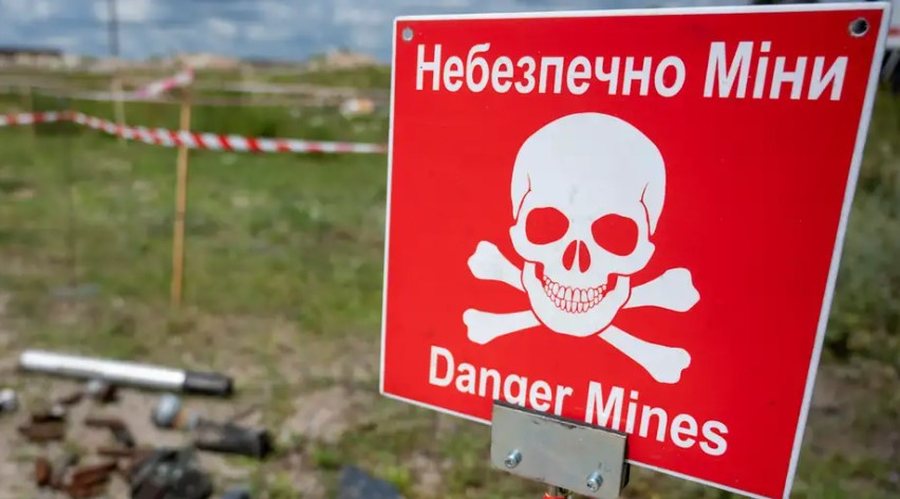
Several Eastern European countries are planning a minefield along their borders with Russia and Belarus. The aim is to protect NATO's eastern flank from a possible Russian attack.
Since the start of Russia’s aggressive war against Ukraine in February 2022, there has hardly been a more pressing question for NATO than how to better protect its eastern flank. Finland, Estonia, Latvia, Lithuania and Poland are five of the six NATO countries that share a border with Russia and/or Belarus. Since 2022, these countries have invested heavily in better securing these borders – for example, through barbed wire fences and surveillance systems. Now a new plan is being added: landmines.
Withdrawal from the Ottawa Convention
In recent months, five NATO countries have announced their gradual withdrawal from the so-called Ottawa Convention. This treaty, concluded in 1997 and which entered into force two years later, bans landmines worldwide and prohibits their use, production and transfer. These mines are highly controversial, among other things, because they can indiscriminately strike both soldiers and civilians. Furthermore, the remaining mines pose a long-term threat even after a conflict has ended. In 2023 alone, almost 6,000 people worldwide were killed or injured by landmines - 80 percent of the victims were civilians, including many children. Mine clearance is dangerous, expensive and extremely time-consuming.
The withdrawal of the five NATO states is expected to become official, with only Norway, which also shares a nearly 200-kilometer border with Russia, intending to stay in the agreement. Starting at the end of the year, the five NATO countries that have withdrawn can resume producing and storing landmines near their borders, which can then be deployed quickly and on a massive scale in the event of an emergency.
In total, 164 countries around the world have signed the Ottawa Convention, but 33 are not parties to it. These include the major powers, the United States, China, as well as Russia. The Kremlin has by far the largest stockpile of landmines in the world - Russia is estimated to possess 26 million. Many of them are already in use in Ukraine.
Millions of mines in the forests?
According to the non-governmental organization Handicap International, 58 countries and many other areas are still contaminated with landmines - even if the conflicts date back decades.
And yet, in the worst case, other large areas could be added within just a few years. The border between the five NATO countries and Russia and Belarus is approximately 3,500 kilometers long - from Finnish Lapland in the north to the Polish province of Lublin in the south. Much of this territory is sparsely populated and heavily forested, making it difficult to constantly monitor the border strip.
But concerns about a possible Russian attack on NATO territory are high. So high that these countries could now use weapons that the world wanted to ban and eliminate. According to a report in the British newspaper Telegraph, NATO experts are already analyzing which areas could be considered for potential mines. The goal of the NATO countries is maximum deterrence: Together with other border security measures, this mine belt is intended to inflict such heavy losses on the advancing enemy in the event of a Russian attack that Moscow will refrain from a prolonged war.
New Iron Curtain
To truly effectively protect this long strip of border, millions of mines and booby traps would likely be needed. This measure would make areas uninhabitable for decades, and the damage to people and the environment would be difficult to predict.
David Blair, foreign correspondent for The Telegraph, has called this a new, explosive “Iron Curtain” – alluding to the rather shaky border between NATO and Warsaw Pact states during the Cold War. In parallel with the possible laying of mines, NATO states in Eastern Europe have taken many other measures. Border fences and walls have already been built or reinforced, modern surveillance and early warning systems have been installed, and troop contingents have been increased.
Some of the neighboring countries also plan to deploy drone defense systems along the border, deepen irrigation systems so they can be used as trenches in an emergency, or plant trees along important roads to provide visual protection for civilians and soldiers.
Necessary or irresponsible?
One of the most vulnerable countries along NATO's eastern border is Lithuania. Concerns about a possible Russian attack are particularly high. Lithuania alone plans to invest around 800 million euros in the production of new mines in the coming years. Lithuania's Defense Minister, Dowile Šakaliė, defended the mine plans, speaking of an "existential threat" to his country. Moreover, when Russia has been producing more and more landmines recently, while Europe has been destroying its stockpiles under the terms of the Ottawa Convention.
Eva Maria Fischer, Advocacy Director at Handicap International Germany, told DW that this is a dangerous and worrying development. "Of course, concerns about the security of Eastern European states can be justified in the current unstable international context," Fischer said in March, when the first of the five NATO states announced their withdrawal plans. "However, long-term security cannot be built on weapons that kill indiscriminately, remain in the ground long after the conflict is over, continue to maim civilians and destroy nature."
"There are alternatives to defending a country," Fischer said. "These may seem more expensive, but they are not when you consider the huge subsequent costs of using landmines."/ DW (A2 Televizion)











